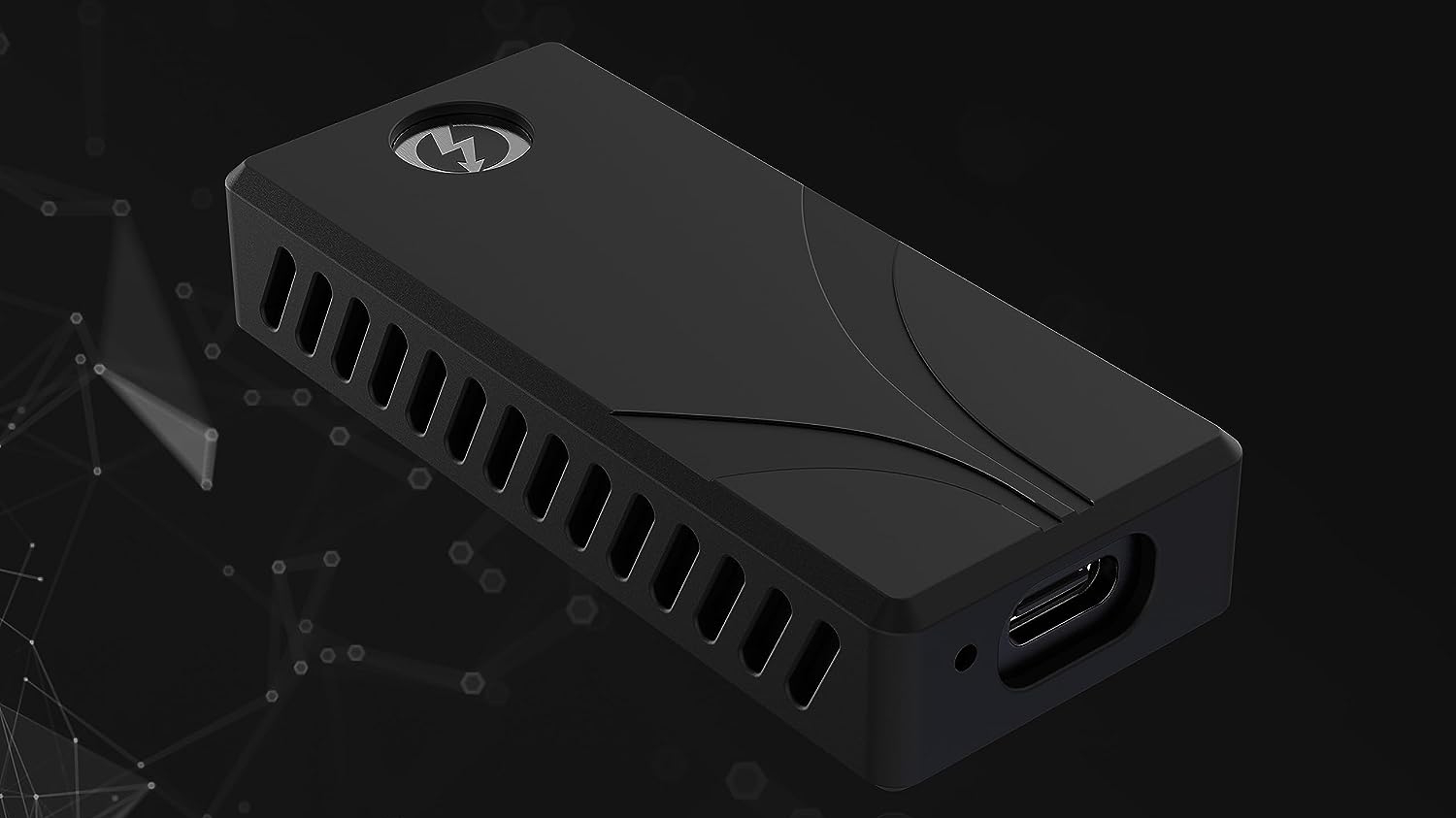Sabrent External SSD Delivers 1TB At 2.7 GB/s For $199

Sabrent has unleashed the company's new Rocket Nano XTRM (SB-XTMN-1TB) to rival the best external SSDs. Designed to take advantage of Thunderbolt 3, the external SSD offers consumers 1TB of storage with transfer speeds of up to 2,700 MB/s. The Rocket Nano XTRM 1TB retails for $199.99 on Amazon.
The Rocket Nano XTRM measures 2.7 x 1.1 x 0.5 inches and weighs 2.2 ounces. It's slightly smaller than your typical bank card. The aluminum body helps keep the weight down while providing heat dissipation benefits. The lightweight and compact design lets you take the external SSD anywhere, including inside your shirt pocket. An optional handy silicon sleeve is available to keep the external SSD safe from accidental drops and harsh environments.
The Rocket Nano XTRM uses a USB Type-C connection, allowing it to connect to your desktop PC, laptop, smartphone, tablet, or any other device with a USB-C port. It's the preferred interface where the Thunderbolt 3-certified external SSD can hit its advertised 2,700 MB/s transfer speeds. The quoted performance shows that the Rocket Nano XTRM is a worthy rival for the SanDisk Pro-G40, which we consider the best portable SSD.
The Rocket Nano XTRM doesn't necessarily require a USB Type-C port. It is backward compatible with previous USB ports, such as USB 3.2 Gen2x1, but it'll cripple the transfer speeds to 900 MB/s. Sabrent includes two cables with the Rocket Nano XTRM: a USB Type-C to USB Type-C cable and a USB Type-C to USB Type-A cable. Regarding compatibility, the external SSD works right out of the box on Windows and macOS operating systems without additional drivers or power cables.
The Rocket Nano XTRM 1TB retails for $199.99 on Amazon. However, Sabrent is running a special sale for the external SSD's introduction, where it can be yours for $169.99 at the company's store. The Rocket Nano XTRM comes with a one-year warranty. However, registering your product with Sabrent will extend the warranty period to three years.
Get Tom's Hardware's best news and in-depth reviews, straight to your inbox.

Zhiye Liu is a news editor, memory reviewer, and SSD tester at Tom’s Hardware. Although he loves everything that’s hardware, he has a soft spot for CPUs, GPUs, and RAM.
-
abufrejoval Hmm, that should be interesting to evaluate physically...Reply
My experience with external TB3 adapters for my NVMe drives wasn't too great.
I mostly used them to create backups of operating systems that were either important, needed to migrated to newer storage or actually were used as a template for other machines: cloning Windows has become so extremely easy, even Microsoft is using it for every installation.
But the first thing I noticed was that there was no USB fallback, just in case your host wasn't 100% certified as some of my AMD notebooks were.
The second thing was that the controllers only used two lanes at PCIe 3.0, which had things top out at 1GB/sec or quite the same speed that 10GBit USB sticks deliver the cost of a 2TB stick for that TB3 NVMe enclosure... economically TBx to NVMe is dead for bandwidth and capacity at this point.
And then my TB3-to-NVMe thingies just died within three of four usages, with absolutely no fuzz, which meant it took me a long time to figure out it was the bridge chip that was just plain dead and not some interoperability issue!
Native SATA to USB 10Gbit sticks deliver 1GB/sec bandwidth today and almost the same economy as a Samsung 970 Evo+ in terms of capacity: that makes it very hard to take a leap of faith into a tech that has failed so quickly and completely.
I'm rattled enough not to trust a real USB failback, so please do your very best and test these things within an inch of their life, so we don't have to suffer the slings and arrows of an outragous ...overdesign without reliability or economy?